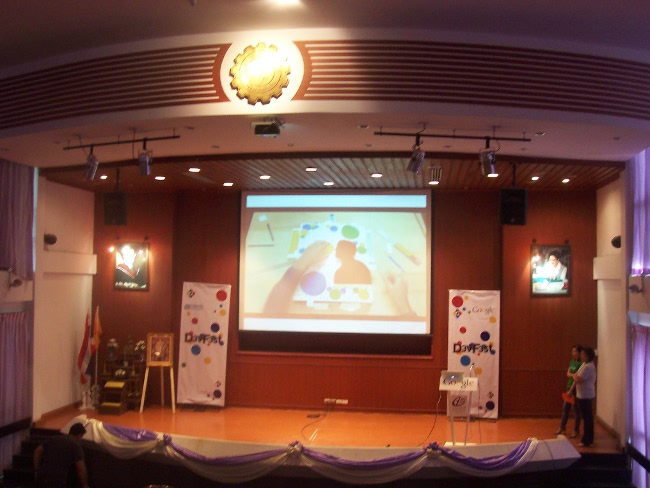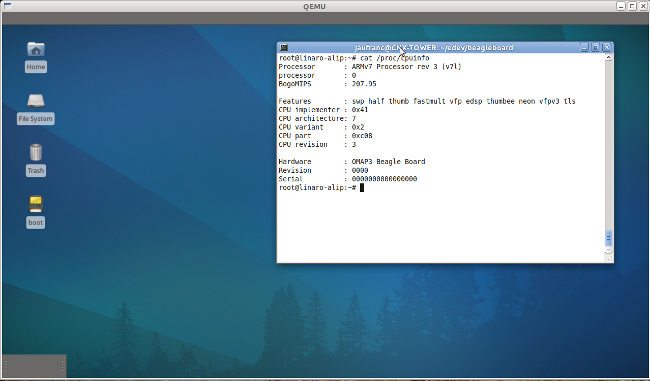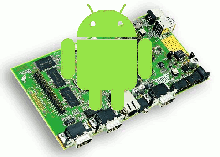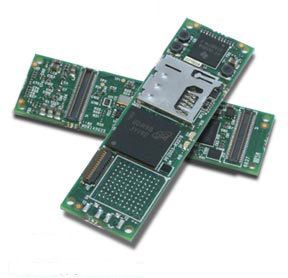With Internet-connected flat TVs and set-top boxes, we can now use browse the web and play games. But the traditional remote is not up to the task and new solutions are needed to interact with smart TVs and internet STB such as gesture recognition, wii-like remotes and tablet/smartphone control. A few companies showcased their solutions at IBC (International Broadcasting Convention) 2011, which took place between the 9th and 13th of September 2011 in Amsterdam: PrimeSense Gesture Recognition PrimeSense, an Israel-based company known for its range image sensor embedded in the “Kinect” motion-based controller for Xbox, began to promote the sales of its range image sensors to TV and STB makers. PrimeSense ran a prototyped UI software on a notebook PC and controlled the UI by using a gesture recognition device connected to a PC. The UI can be operated by moving a hand. You can then control TV screen like […]
Summary of Google Devfest 2011 Chiang Mai, Thailand
I attended Google Devfest 2011 in Chiang Mai, Thailand last Saturday (24 September 2011) . This was really interesting and enlightening. So if are a developer, I really recommend to register to a Devfest if Google comes to your city. I was relatively surprised by the number of attendees which I estimate between 150 to 200. This Devfest focused on three main subjects: Android HTML5 (and Chrome) Google Analytics Please find the complete schedule below: Track 1 Track 2 09:00 – 09:30 Keynote 09:30 – 10:30 Android Market for Developers (Ankur Kotwal) 10:30 – 11:00 AM Break 11:00 – 12:00 Bleeding Edge HTML5 (Eric Bidelman) 12:00 – 13:00 Implementing Google Analytics (Vinoaj Vijeyakumaar) 13:00 – 14:00 Lunch 14:00 – 15:00 What’s New and Important in Android (Ankur Kotwal) Displaying Large Geographic Datasets: Google Fusion Tables (Luke Mahe) 15:00 – 16:00 These Aren’t the Site You’re Looking For: Modern HTML5 Web Apps (Eric Bidelman) Working Off the Grid: HTML5 Offline (Ernest Delgado) 16:00 – 16:30 PM Break 16:30 – 17:30 Insights […]
Beagleboard Emulator in Ubuntu with Qemu
If you just want to try a program on Beagleboard, but do not want (or have the means) to purchase a board, you may be able to use qemu to emulate the Beagleboard or BeableBoard-xM. I’ll details the instructions to run the Nano build (minimal kernel) and the ARM Linux Internet Platform (ALIP) distribution for Beagleboard on qemu. Please read the full post before starting the installation before there are currently some issues such as no Ethernet support. First, install or update linaro-media-create: sudo add-apt-repository ppa:linaro-maintainers/tools sudo apt-get update sudo apt-get install linaro-image-tools Then download the nano image and omap3 hardware pack: wget http://releases.linaro.org/platform/linaro-n/nano/11.08/nano-n-tar-20110823-1.tar.gz wget http://releases.linaro.org/platform/linaro-n/nano/11.08/hwpack_linaro-omap3_20110823-0_armel_supported.tar.gz Generate the image for qemu: sudo linaro-media-create –image_file beagle_sd.img –dev beagle –binary nano-n-tar-20110823-1.tar.gz –hwpack hwpack_linaro-omap3_20110823-0_armel_supported.tar.gz If you don’t have it already, get the latest qemu-linaro package from Linaro Maintainers PPA: sudo apt-get install qemu-system Check the version is correct: qemu-system-arm -version QEMU emulator version […]
How to Develop and Port Android to a New Hardware Platform with Linaro
Zach Pfeffer, Linaro Android Working Group tech lead, gives an introduction to making Android work on a new hardware platform at Linaro Connect Q3.11 in Cambridge, August 2011. He starts by giving details about Android, its implementation, and how source code is managed. He then gives details about how to add support for a new board, taking advantage of Linaro scripts and infrastructure, already supporting community boards from several ARM SoC vendors. Here are the main topics covered during this 48 minutes presentation: General Android Overview (at 5:00 in the video) and different Android “components”: The Linux kernel Non-upstreamed kernel extensions A set of shared and static libraries A set of Hardware Abstraction Layers (HALs) A JIT capable VM Android activity framework Android applications Repo, Gerrit and Git (25:50) Porting to a new Platform (35:07) HALs and Hardware Acceleration (39:00) Continuous Integration (41:02) Linaro Evaluation Build (LEB) Integration (45:06) Slides […]
UEFI Secure Boot – Windows 8 vs Linux
Last week, Microsoft showcased Windows 8 PCs with super fast boot thanks to the Unified Extensible Firmware Interface (UEFI). The latest UEFI standard, released on April 8, includes a secure boot protocol which will be required for Windows 8 clients. Secure UEFI is intended to thwart rootkit infections by requiring keys before allowing executables or drivers to be loaded onto the device. Problem is, such keys can also be used to keep the PC’s owner from wiping out the current OS and installing another option such as Linux. It all started with slide 11 in one Powerpoint presentation entitled “Delivering a secure and fast boot experience with UEFI” presented by Arie van der Hoeven, Principal Lead Program Manager Microsoft Corporation during Build conference: Secure boot Current issues with boot Growing class of malware targets the boot path Often the only fix is to reinstall the operating system UEFI and secure […]
Open a File Directly at the Requested Line with Vi
When you compile a program and an error occur, the compiler will report the file name and line number with the error. Usually, I use vi to access the file, then type “:line_num”, for example if I want to jump to line 123, I would type :123 after opening the file. But there is a way to do that directly with vi by using +line_num. For example: vi +123 code.c To go to the last line, I would normally use the capital letter G when vi is started, but this can be done while opening the file as follows: vi +$ code.c One last tip: To go back at the top of the file in vi, simply use :0 or the capital letter H.
99 USD OMAP3 Based Overo Computer On Module by Gumstix
Gumstix has manufactured its Overo COMS based on OMAP3503 and OMAP3530 since 2008. They have now announced a new low cost version named Overa Sand that sells for 115 USD per unit or less than 99 USD per unit for orders of 1,000 units or more. Overo Sand COM is Gumstix’s most basic computer-on-module with 256MB RAM and no on-board NAND. Here are the board specifications and features: Processor: Texas Instruments OMAP 3503 Applications Processor: – ARM Cortex-A8 CPU @ 600 Mhz Memory: 256MB RAM NO On-Board NAND Included Features: microSD card slot TPS65950 Power Management Expandability: via one 140-pin expansion board of Gumstix Overo series or custom, 140-pin expansion board via 27-pin camera board Connections: – (2) 70-pin connectors with 140 signals for: – I2C, PWM lines (6), A/D (6), 1-wire – UART, SPI, Extra MMC lines – Headset, Microphone – Backup battery – High Speed USB Host and […]
Learn How to Optimize Android Apps for Tablet
After India and the US last month, Google will organize Android Developer labs sessions in Europe to train developers to optimize their applications for Tablets. Registration is now open for the following European cities: Berlin — September 28 and 29. London — October 3 and 5. Paris — October 27 and 28. Sometimes late October…, but you can register now. This ADL series isn’t another set of introduction-to-Android sessions, nor any other kind of general overview like you may have at Google Devfest. It’s specifically aimed at optimizing Android applications for tablets, in particular creating high-quality tablet applications to provide a polished user interface and an enjoyable user-experience. Registration is open to anyone, but as Google can only accommodate a relatively small number of attendees, they will select attendees who already have an high quality Android app with the potential to be a top-tier tablet app. This series of labs will teach you: The best practices […]












